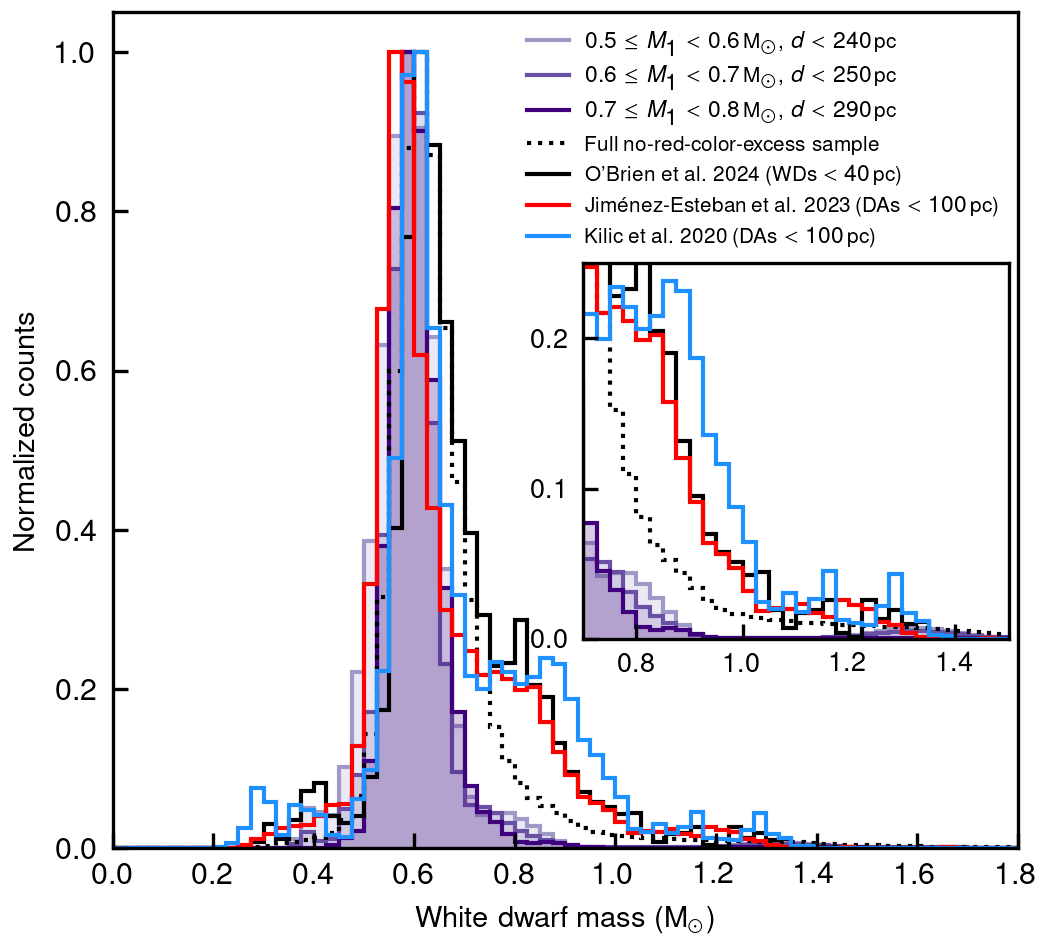A deficit of massive white dwarfs in Gaia astrometric binaries

The third data release of Gaia introduced a large catalog of astrometric binaries, out of which about 3200 are likely main-sequence stars with a white dwarf (WD) companion. These binaries are typically found with orbital separations of ∼1 au, a separation range that was largely unexplored due to observational challenges. Such systems are likely to have undergone a phase of stable mass transfer while the WD progenitor was on the asymptotic giant branch. Here we study the WD mass distribution of a volume-complete sample of binaries with K/M dwarf primaries and orbital separations of ∼1 au. We find that the number of massive WDs relative to the total number of WDs in these systems is smaller by an order of magnitude compared to their occurrence among single WDs in the field. One possible reason can be an implicit selection of the WD mass range if these are indeed post-stable-mass-transfer systems. Another reason can be the lack of merger products in our sample compared to the field, due to the relatively tight orbital separations of these systems. In addition, we find that about 14% of these systems have distant tertiary companions within 1 pc.
For further reading:
- Na'ama Hallakoun, Sahar Shahaf, Tsevi Mazeh, Silvia Toonen, and Sagi Ben-Ami "A deficit of massive white dwarfs in Gaia astrometric binaries" 2024, The Astrophysical Journal Letters, 970, L11